The Nintendo Switch 2 has been one of the most anticipated consoles of all time, and much like its predecessor, it offers a range of both new and old experiences, with a substantial list of games on launch day alone. Kunitsu-Gami: Path of the Goddess falls into a special category of being a new experience for Switch users, despite being released almost a year ago now. It feels right that it finds its home on the Nintendo Switch 2 now.
Kunitsu-Gami was released for PlayStation, Xbox, and PC. However, despite being a perfect fit for a mobile console like the Switch, it was mysteriously absent. The game has a perfect model to stop and start while continuing after only a stage or two. Now, the game has made up for lost time and made a splash on the console on its launch day. However, is it worth coming back for those who have already walked the path?
The Path Calls for Us All

Kunitsu-Gami puts you in the point of view of Soh, the guardian of the priestess Yoshiro, as she attempts to cleanse a mountain from the taint of the Seethe. One day, creatures appear from a corrupted Torii gate that resemble Yo-kai from Japanese mythology. At the peak of the mountain, Soh is defeated by one of the Seethe, causing his powers to be absorbed by the entity. Drained of power, your task is to escort Yoshiro down the mountain, all while cleaning the taint from the mountain path you’ve walked.
The setup for Kunitsu-Gami is very strong, and despite starting with an unwinnable fight, it still manages to feel impactful. This is mostly because there is barely any dialogue in the game. The most I heard was for Yoshiro calling out to me for help when she was being attacked during gameplay. I was invested, and even having that one voice line made me stop fighting whoever I was to go rescue her.
This managed to meld together the narrative within the gameplay to tell a story. At a glance, the plot feels very basic, but Kunitsu-Gami seems to prioritize telling its tale solely through gameplay, with an occasional cutscene tying everything together. This is especially true with how some scenes really make it clear how much Soh cares for Yoshiro, all without a single word being spoken to the player. It made me want to find out so much more about the world that I even started reading the Ema plaque rewards you obtain from the villages. These give helpful background on the enemies and villagers, but aren’t necessarily needed to understand the story.
This approach of storytelling might be the game’s only weakness, as even later on, some information isn’t properly conveyed to the player. This includes what the Seethe are, or why this specific mountain has been defiled. This is mostly because the game refuses to use the term Yokai, but will use their names. Dialog might not help this situation, but I would have liked more details about each Seethe outside of the two sentences that we get from the plaques. After all, there is so much interesting here that I would have loved to learn more about it.
Moving Down the Mountain

The gameplay of Kunitsu-Gami was perhaps the most surprising element for me. I had heard almost nothing about the title before I sat down to play. So, when I learned that I was playing a tower defense game, I was pleasantly surprised. After all, I had grown up playing Adobe Flash tower defense games on Newgrounds, so I was excited to get my hands on the genre again.
The flow of the gameplay generally follows a two-part structure. The first has you escort Yoshiro towards the corrupted Torii gate. This is broken into two phases: daytime and nighttime. During the day, a pre-determined route is laid out for you that must be cleansed for Yoshiro. Once you have cleansed the spirit route using crystals, one of the main currencies of the game, she will begin to dance along the path to the Torii Gate. During this, the game allows you to prepare by saving villagers inside the village, who can be assigned different classes. They can then be placed to help Yoshiro get to her destination, and if her health reaches zero, you will instantly lose and be forced to restart.
This part is actually pretty fun, as I found myself attempting to figure out strategies to get her to the Torii gate as fast as possible. One of the tactics I adopted during my own gameplay has Yoshiro stopping at certain points that I knew were going to be easily defensible. This tactic ended up saving me a lot of time, because the villagers were able to help in the fight. Villagers will adopt various roles based on your orders and crystal spending to ensure Yoshiro’s survival. These roles would include DPS, Tanks, and healers as well as some other types. However, I eventually found that I would focus on having a tank-style villager surrounded by two smaller attacks. This usually cleaned up smaller enemies, and I could focus on taking on the larger threats or protecting Yoshiro.

That being said, I can say that some of the action can feel a little weird. The game uses a top-down style of camera when moving around the field, and every attack pushes Soh forward. This isn’t a problem at first, but mixing in the dance or strong attacks will have Soh start dancing forward. This can make the combat feel disorienting until you get used to it. I also kept wishing for a lock-on feature that would have helped me keep track of enemies.
This style of attacking does keep in line with Soh’s role as a protector, because Yoshiro herself uses dance as prayer. In fact, your sword also works as an onusa, a wand used to purify people and places in Shinto ceremonies. So, even when simply attacking, it is supposed to be like a cleansing ritual ridding everything of impurities.
Building The Future Together

The second stage of gameplay will revolve around the villages that appear after each stage. Once you and Yoshiro have saved the villagers and purified the Torii gate, people will move back into the now purified village. Here, you’ll give orders to the villagers on what they should repair, and each completion will give you rewards.
These rewards vary from getting more Ema Plaques and upgrade materials. While fully repairing a villager will grant an upgrade to either your rations or the maximum amount of crystals you can hold at a given time, both of which are important resources that will need to be focused on, especially rations, as this will be the only way to heal yourself and villagers during stages.
Each repair job will take either one or two stages to complete, meaning a village won’t be fully repaired until you have already moved three villages down the mountain. So, between stages, I would return to each purified village to obtain rewards and have them focus on the next stage of repairs. Doing this would accumulate into a lot of downtime between each stage.

Thankfully, once the repairs are fully completed, there is no reason to go back, aside from collecting offerings to replenish your crystals or rations. This can still take a significant portion of time, as there were moments when I wouldn’t go to the next stage for five minutes. This was because I would be leaving multiple loading screens on the way to each village.
At the end of it, I felt like completing two stages fully would take more time than I spent inside each stage. Whether that was to upgrade each class or Soh, repair the villages, or pick up offerings. After three stages, I would put down the game and need to play something else, although the aesthetics and combat would keep pulling me back in.
New Platform, New Features

Like many Nintendo Switch 2 ports, Kunitsu-Gami fully utilizes the Joy-Con 2’s mouse controls. This allows you to control Soh using the left Joy-Con 2 while the right acts as a mouse. I didn’t care for this mode initially, but I will admit that using the controller to place the villagers could be finicky. The mouse mode alleviated that, allowing more precise control that the controller can’t replicate.
This release also includes a brand-new mode, Otherworldly Venture, which becomes available after completing the game for the first time. This mode streamlines much of the process of the game and instead lets you focus on the stages. This adds a bit of randomness to the process, as you will move from stage to stage and need to collect the various upgrades each run.
This felt like a suitable reward for completing the game, and I would go back to it when I wanted to play without going through the story. The best part is that while this was used to celebrate the release of the Switch 2 version, it isn’t exclusive to it. So, even if you don’t buy this version of the game, this new mode will be available to you.
I Pray for You

Kunitsu-Gami: Path of the Goddess is a criminally underrated gem that I am surprised hasn’t been talked about more. The aesthetics and gameplay choice are one that pleasantly blends together seamlessly to create something addictive. There is always a new way to approach any given problem and work within the confines that the game gives you.
While the lack of dialogue and storytelling style might be a turn-off for some, I found that it was part of its charm, and even now, I want to go back and play more. Yes, Kunitsu-Gami is a 2024 game that was absent from the Switch during its initial launch, but it is more than worthy of being a Nintendo Switch 2 launch title – it has found its home here.
Disclaimer: Capcom provided a Nintendo Switch 2 copy of Kunitsu-Gami: Path of the Goddess to Final Weapon for review purposes.


